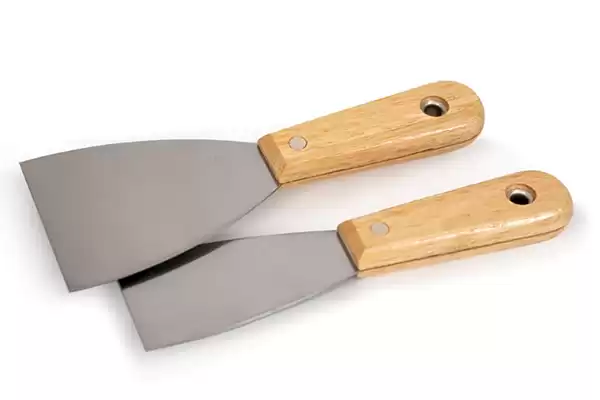The putty knife is a staple in every handyman’s toolkit, known for its versatility and reliability. Over the years, this humble tool has undergone significant transformations in design, materials, and application, evolving from a simple implement to an indispensable tool for professionals and DIY enthusiasts alike. In this article, we’ll take a closer look at the history and evolution of the putty knife, exploring how it has adapted to meet the changing needs of users.
Origins of the Putty Knife
The putty knife’s origins can be traced back to the early days of construction and repair work, where simple, flat tools were used to apply smooth materials like putty and plaster. These early tools were often handcrafted, with blades made from readily available materials such as iron or bronze. The handles were typically wooden, shaped for comfort and ease of use.
In its early days, the putty knife was a straightforward tool with a specific purpose: applying putty to seal windows. Glaziers used it to press the putty into the gaps around window panes, ensuring a secure fit and protecting the glass from damage. The tool’s design was rudimentary, with a flat, rigid blade that allowed for precise application and smoothing of putty.
The Industrial Revolution and Mass Production
The Industrial Revolution brought significant changes to the production of tools, including the putty knife. With the advent of mass production, putty knives became more accessible to a broader audience. Steel became the material of choice for blades, providing greater durability and resistance to corrosion. Handles were still predominantly wooden, but with improved designs for better ergonomics.
During this period, the putty knife began to evolve beyond its original purpose. The increased availability and affordability of these tools led to their adoption in a wider range of applications, from plaster and spackle to scraping off old paint and wallpaper. The putty knife’s versatility made it a go-to tool for many trades, from carpentry to painting.
Modern Innovations and Materials
In the 20th century, the putty knife continued to evolve with advancements in materials and manufacturing techniques. The introduction of plastic and composite handles provided a more comfortable grip, reducing hand fatigue during prolonged use. These new materials also made the tools lighter, without sacrificing strength.
Blades, too, saw innovation. Stainless steel became a popular choice, offering resistance to rust and increased flexibility. This flexibility allowed for smoother application of materials, especially on uneven surfaces. Some modern putty knives also feature blades with varying degrees of flexibility, catering to specific tasks and user preferences.
The modern era also saw the development of specialized putty knives. For instance, flexible-blade putty knives became popular for applying materials like spackle or joint compound, while rigid-blade versions were designed for scraping and other demanding tasks. Some models even incorporated features like serrated edges for scoring or notched blades for applying adhesive.
The Putty Knife in the Digital Age
The digital age has brought about further changes in how tools like the putty knife are designed, manufactured, and used. Today, computer-aided design (CAD) allows for precise engineering of putty knives, optimizing them for comfort, efficiency, and durability. Manufacturers can now produce putty knives with ergonomic handles that reduce strain, non-stick blades that make cleaning easier, and multi-functional designs that combine several tools into one.
The rise of online shopping and DIY culture has also contributed to the putty knife’s continued evolution. Consumers now have access to a vast array of putty knives tailored to specific tasks, from narrow blades for detailed work to wide blades for covering large areas. Tutorials and videos available online have empowered more people to undertake home improvement projects, further cementing the putty knife’s role as an essential tool.
Conclusion
The evolution of the putty knife reflects broader trends in technology, materials, and consumer needs. What began as a simple tool for applying putty has grown into a versatile, indispensable instrument used in a wide range of applications. As tools continue to evolve in response to changing demands, the putty knife will undoubtedly remain a cornerstone of any toolkit, valued for its adaptability, durability, and ease of use. Whether you’re a professional tradesperson or a weekend DIYer, the putty knife will continue to be a reliable companion in all your projects.
Post time: Sep-10-2024







